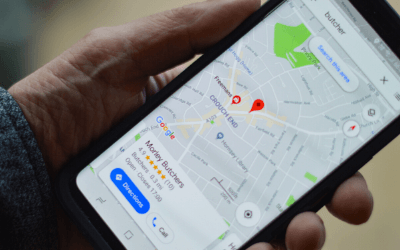Digital marketing and content creation are deeply intertwined. (Quality) content is king, after all. But that content wasn’t just thrown together to earn such a royal status. Someone had to first plan out a strategy for that content and then make it.
Content creation itself can take hours and require a team to plan, write and then post. But don’t limit yourself to only creating blog content. Blog posts are only one small component of larger digital marketing and content creation strategies. Your digital marketing strategy will inform your content creation. However, your audience’s engagement will further inform what kind of content you develop in the future.
Webinars, infographics, e-books and whitepapers all take time to develop. With that in mind, we plucked five pearls of wisdom about the expectations and realities of digital marketing and content creation.
Expectation: You only need to create content a few times to see results.
Reality: Digital marketing and content creation are continuous efforts!
You need to create content on a consistent basis if you want to see results for your brand. Content creation should be an ongoing task to generate the results you want for your brand. This includes creating webinars, e-books, whitepapers—anything your audience would engage with and love. Just writing a blog post a few times a year won’t be enough to impact your bottom line.
By studying engagement rates for each piece of content, you’ll be able to pick up insights on what topics people are most interested in and improve your overall content marketing strategy.
Running out of ideas is a common issue that content creators face, and generating new ideas requires time, effort, and creativity.
Luckily, there are various ways to generate fresh ideas for your content marketing. Asking your readers and employees for ideas, looking at your competition, using content idea generators, and creating a content calendar can all help you come up with new and engaging topics to write about. By allowing readers to submit content ideas, asking employees for ideas, researching your competitor’s content or using idea generators (like Portent’s Content Idea Generato, HubSpot’s Blog Topic Generator, or ChatGPT), you can spark new ideas and stay up-to-date with the latest trends.
While it’s time-consuming at a first glance, it’s a worthy investment for your digital marketing strategy and for your bottom line.
Expectation: You’ll see increased web traffic and conversions immediately.
Reality: Content creation takes time.
It can take up to six months before you start to see true success with your content. The quick jump in leads, followed by a plateau, is common when you first launch a campaign. But instead of giving up, focus on generating more relevant content that users can actually benefit from. Measure their performance and make adjustments as needed. Your content will yield a much higher return in the long-term.
It takes six to eight touches before you generate a solid, high-quality sales lead. Consumers know when they’re being sold to and would rather do their own research. On your end, you need to gather plenty of your own information to nurture a potential lead. Don’t bail before the breakthrough—you’re just getting started on your content journey!

Expectation: The more keywords in a blog, the better
Reality: Google penalizes “keywords stuffing” in content.
When you’re in the middle of content creation, it could get tempting to throw in as many keywords as you can to boost your ranking on a Search Engine Results Page, or SERP.
Unfortunately, “keyword stuffing” has the opposite effect.
Your keyword density in a piece of content should be two percent or less. Any higher than that, and you run the risk of a steep penalty from Google. So if you’re using your keyword or keywords in every other sentence, or cram your keywords into all of your metadata, Google will notice.
Keyword stuffing considered against SEO best practices because they’re not providing any kind of helpful information for the reader. Those keywords are simply there for the benefit of the search engine and the website hosting the content. So, as a word to the wise, focus on providing quality content over something with your desired keyword in every other sentence. Otherwise, you’ll hurt your own SEO.
Expectation: Your content is good forever once it’s posted.
Reality: You need to revisit and optimize your content.
Once you’ve got a steady flow of content up and running on your website, letting your blog and premium content pages do their thing might seem like the best move. Don’t fix what isn’t broken, right?
Nope.
Every so often—preferably every few months—you’ll need to revisit your posts and pages to tweak them. This is especially important if a new Google update rolls out that impacts your brand’s SEO.
If you don’t revisit your old content and optimize, you could end up taking a hit across the board with your website’s visibility and search engine rankings. Helpful tools like Checkbot will alert you if any of your website’s pages have SEO, speed or security issues and show you where you can improve thoe pages.
For example, it’s now a best practice to leave keywords out of alt text for images if you want to rank higher on Google. This is because alt text for images is used for accessibility, like text-to-speech readers for the visually impaired. The best way to write alt text is you be descriptive and detailed without injecting your keyword or keywords into them.
Stuffing keywords into alt text is unhelpful because it doesn’t describe what the image shows. And like we pointed out earlier, stuffing keywords into your content can result in penalties from Google. You worked hard to create your content; don’t let it sit and collect dust!

Expectation: Content creation is only good for SEO.
Reality: You can iterate on your content for your overall marketing strategy.
Content can do more than just help your ongoing SEO efforts. It can feed into your larger lead generation strategy as the core of an integrated campaign.
If you have an absolutely dynamite e-book, you can gate that content behind a form, build a landing page and then distribute it in an integrated campaign. Those content-focused campaigns drive new leads into the top of your sales funnel. After first attracting those leads, you can nurture them with even more awesome content before ultimately converting them. Your content feeds into your overall strategy to create a lead generating and lead nurturing engine.
Don’t think of content creation as just a specialized approach. You can center an entire campaign around your content instead of an offer or promotion and still generate quality leads.
Conclusion
Committing to ongoing content creation can ultimately snowball into a huge return on your investment. With a regular cadence of new and interesting content—premium or otherwise—you can learn so much about your potential customers.
Take content creation as an opportunity to reach more people and convert your existing audience. Fully integrate content creation into your digital marketing strategy and think of it as an educational lead magnet. You’ll see results without needing to constantly churn out new promotions to bring in leads and score quick wins. Content creation is how you continuously grow your brand.






